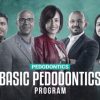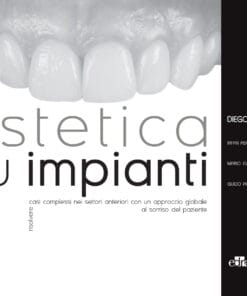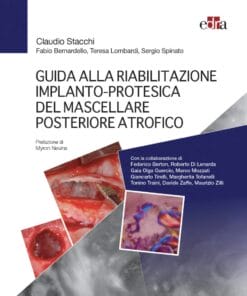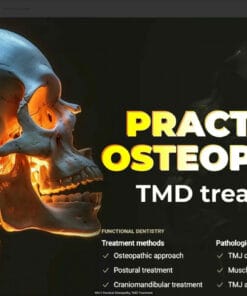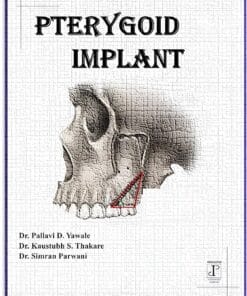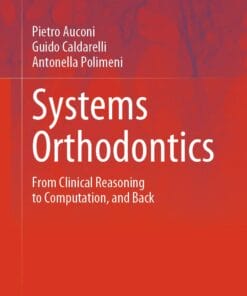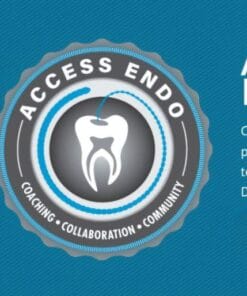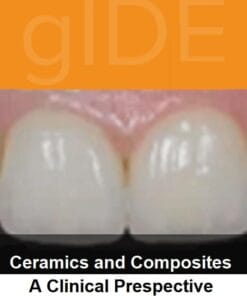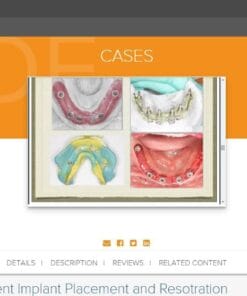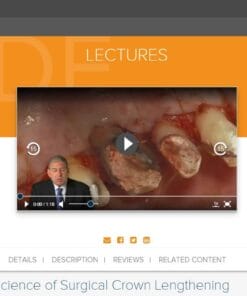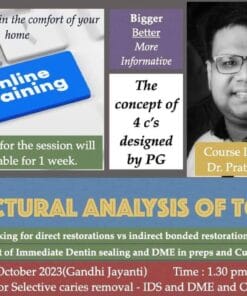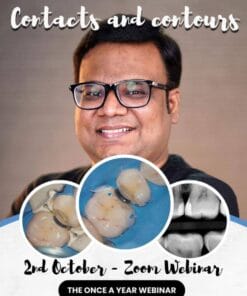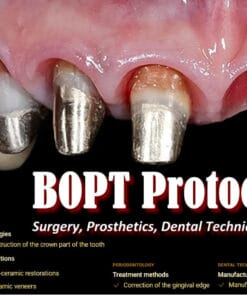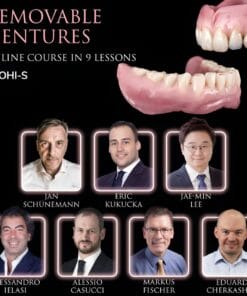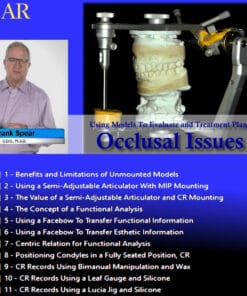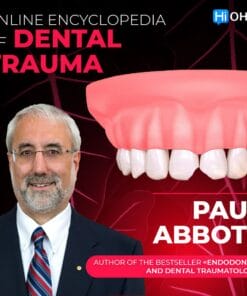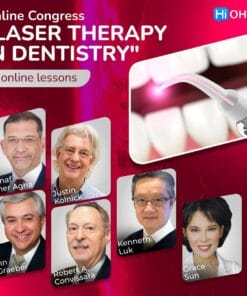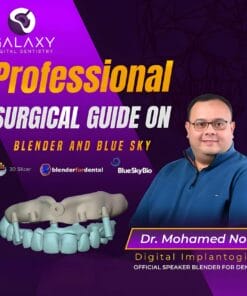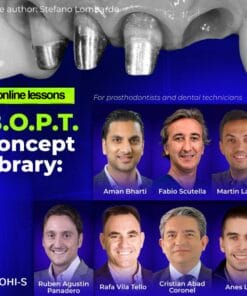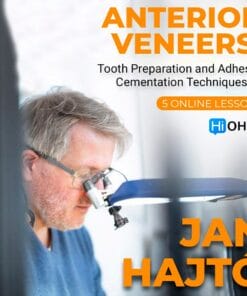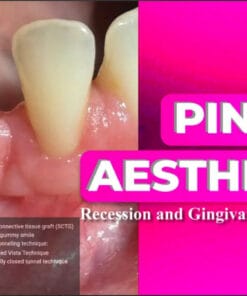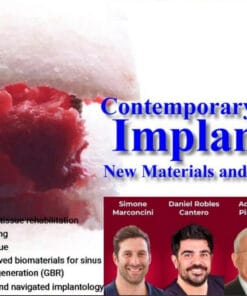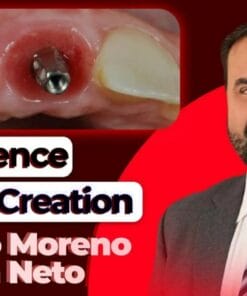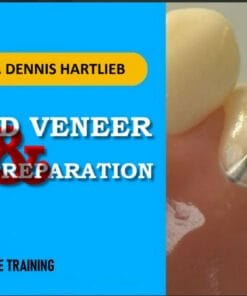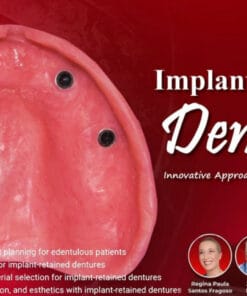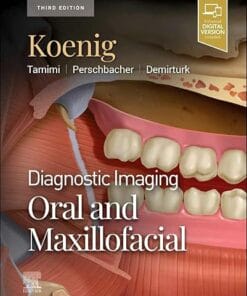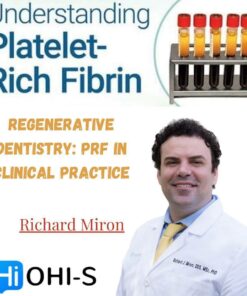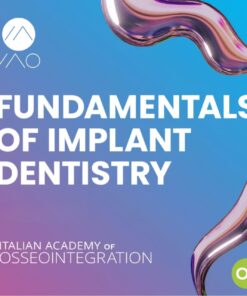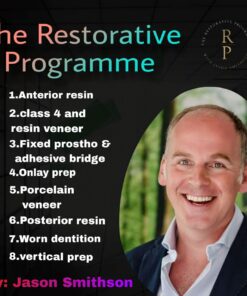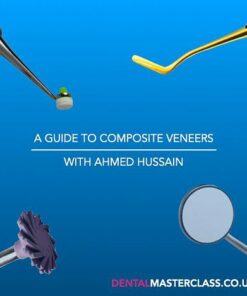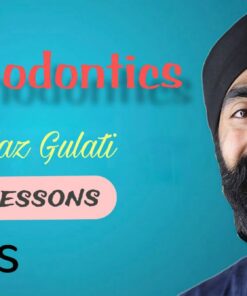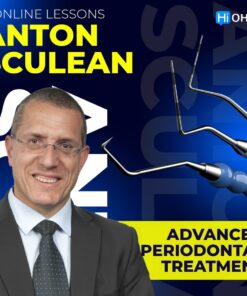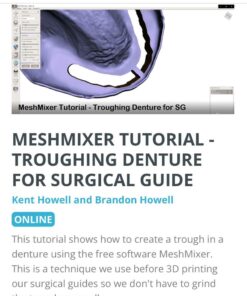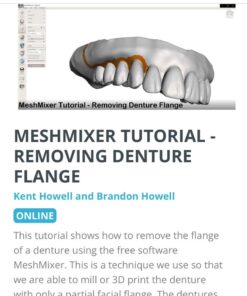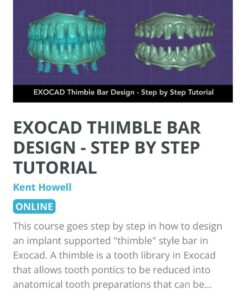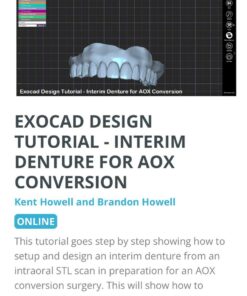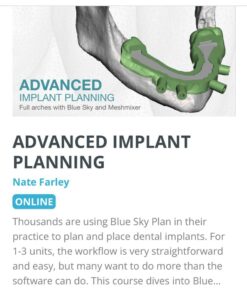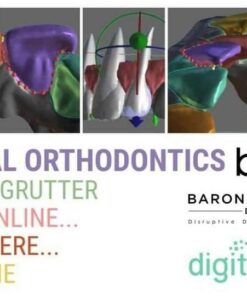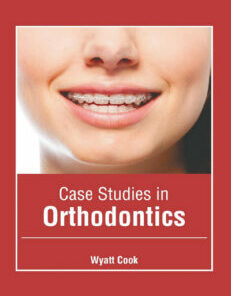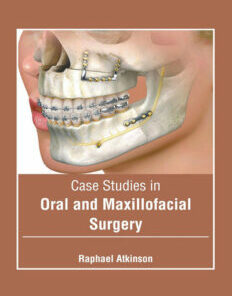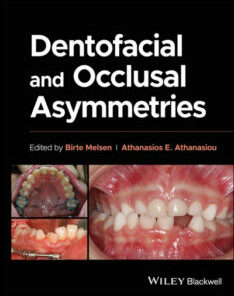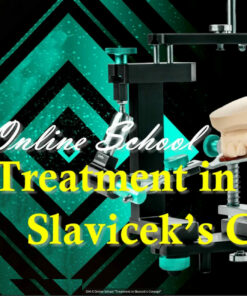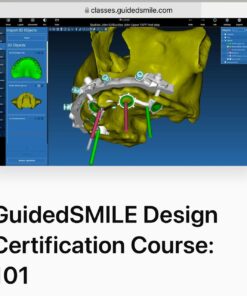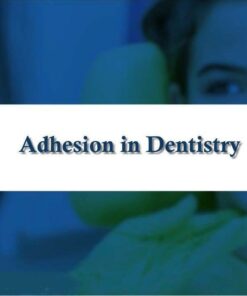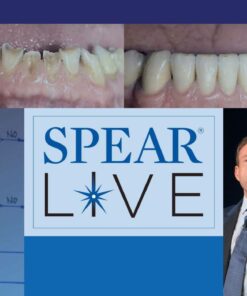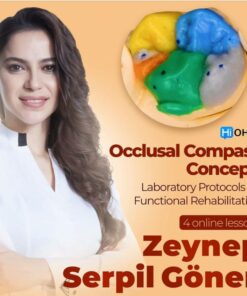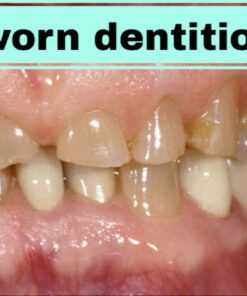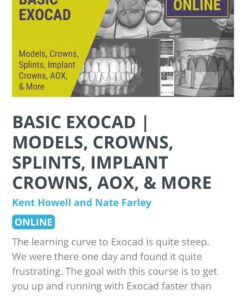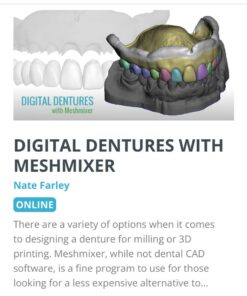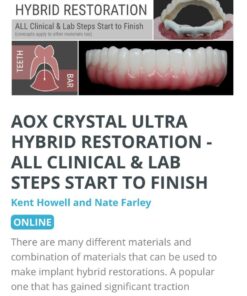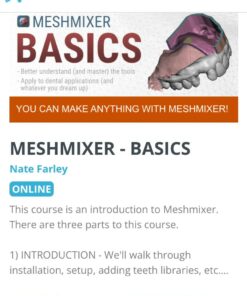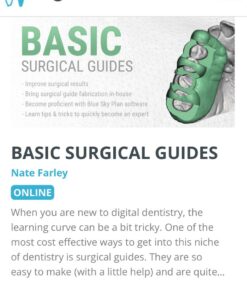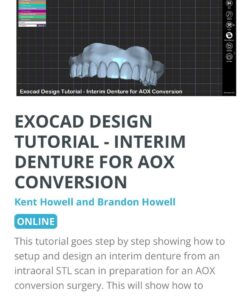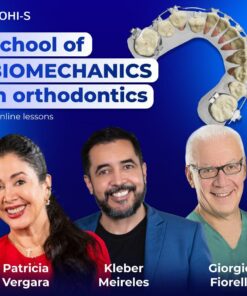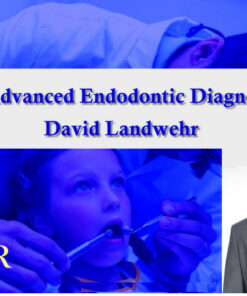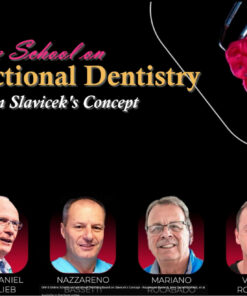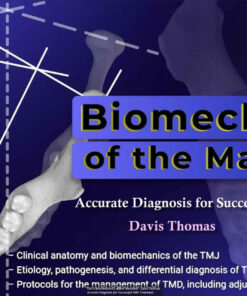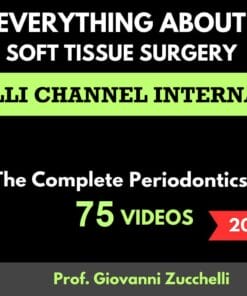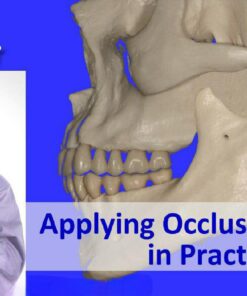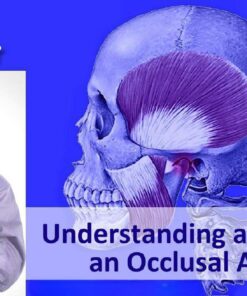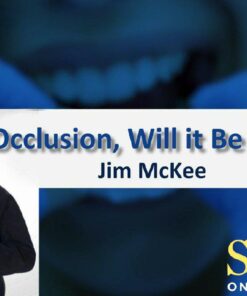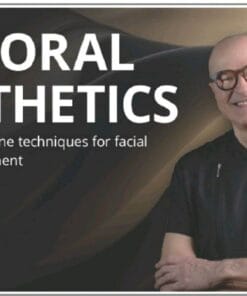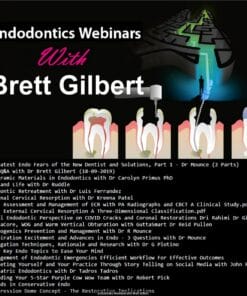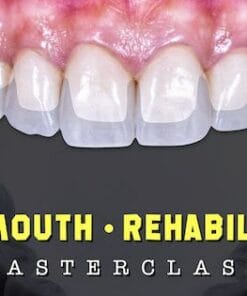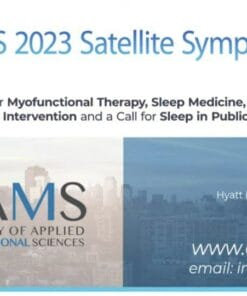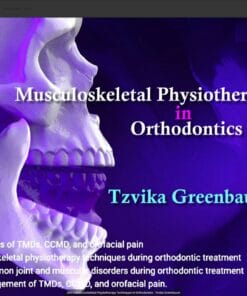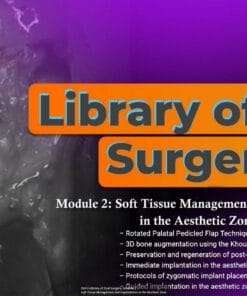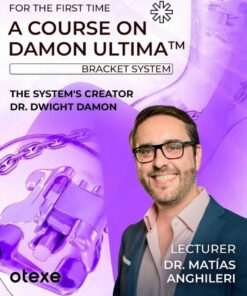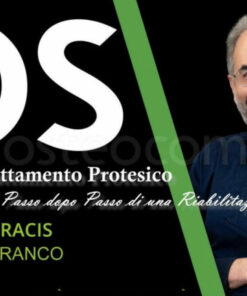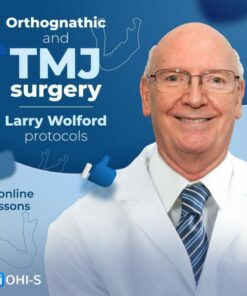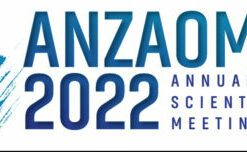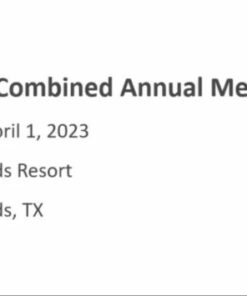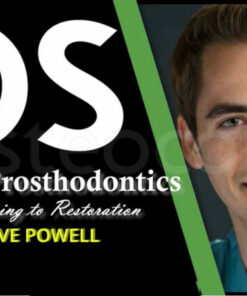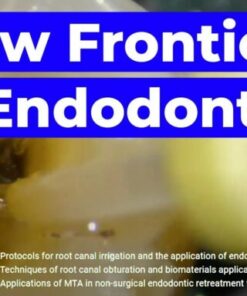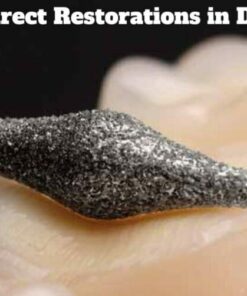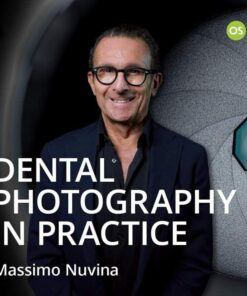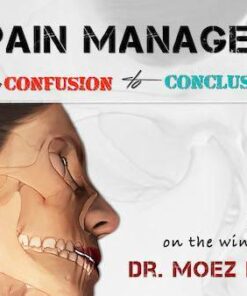Basic and Advanced Occlusion Program ( 25 CREDIT HOURS ) (Course)
25 $
Basic and Advanced Occlusion Program
Basic and Advanced Occlusion Program ( 25 CREDIT HOURS ) (Course)
Looking to improve your knowledge and skills in occlusion in dentistry? Consider taking the Basic and Advanced Occlusion Program. This program covers both the fundamentals and more advanced concepts of occlusion, enabling you to diagnose and treat occlusal problems effectively. The program provides 25 credit hours, which includes several presentations by experts in the field. In this overview, we will discuss all the videos included in the program.
Dr. Michael Iskander presents the first video, “Introduction to occlusion basics & functions.” In this 24-second video, he provides a general introduction to occlusion and its functions. The following video with Dr. Iskander, “Occlusion Definition – Planes And Curves-2,” delves deeper into the definition of occlusion. Dr. Iskander explains the different planes and curves involved in the occlusal system and covers the various anatomical components of the occlusal system. The third video with Dr. Iskander, “Functional Muscles Of Mastication-4,” discusses the functional muscles involved in mastication and how they contribute to occlusion. In the fourth video, “Basic Terminology Of Occlusion-5,” Dr. Iskander covers the essential terminology of occlusion that is necessary to understand more advanced concepts.
Dr. Iskander explains the anterior and lateral guidance in occlusion in the fifth and sixth videos, “Anterior Guidance-6” and “Lateral Guidance-7,” respectively. The seventh video, “Border Movements In Sagittal Plane With Restorative Considerations-8,” presents Dr. Iskander’s discussion on border movements in the sagittal plane and how to consider them when restoring occlusion.
The occlusion of natural teeth is the topic of the second set of videos presented by Prof. Dr. Osama Baraka. In the first video, “Course Outline And Introduction-1,” Prof. Dr. Baraka provides an overview of the topics he will cover in the series. In the second video, “Occlusion Definitions-2,” he discusses the definitions of occlusion, which includes the concepts of centric occlusal contacts and centric relation contacts. The third video, “Centric Occlusal Contacts–3,” covers the types of centric occlusal contacts. In the fourth video, “Types Of Centric Relation Contacts-4,” Prof. Dr. Baraka explains the different types of centric relation contacts and their importance in occlusion. The fifth video, “Concepts Of Occlusion In Centric Position (Static Occlusion)-5,” discusses the concepts of occlusion in the centric position or static occlusion.
To download the course curriculum, please visit https://drive.google.com/file/d/1CHlBXCvzcO53rtllmIEUFlXk5rq9eDdJ/view. The Basic and Advanced Occlusion Program provides an excellent opportunity to expand your knowledge and skills in occlusion in dentistry.
Related Products
Dental Ebook And Video
Guida alla riabilitazione implantoprotesica del mascellare posteriore atrofico pdf
Dental Ebook And Video
Oral Anatomy, Histology and Embryology, 6th edition (Original PDF from Publisher)
Dental Ebook And Video
gIDE ondemand lectures – Edentulous Patient Implant Placement and Restoration
Dental Ebook And Video
gIDE ondemand lectures – The Art and Science of Surgical Crown Lengthening
Dental Ebook And Video
Structural Analysis of Tooth – The Concept of 4 C’s by Dr. Pratiek Gupta
Dental Ebook And Video
SPEAR Using Models To Evaluate and Treatment Plan Occlusal Issues – Frank Spear
Dental Ebook And Video
B.O.P.T. сoncept encyclopedia. For prosthodontists and dental technicians
Dental Ebook And Video
Precision in Laminate Ceramic Veneers: Tooth Preparation and Adhesive Cementation Techniques
Dental Ebook And Video
OHI-S Contemporary Advances in Implantology New Materials and Updated Protocols
Dental Ebook And Video
Tomorrow Tooth & OHI-S The 6 Elements of Orofacial Harmony – Lawrence F. Andrews
Dental Ebook And Video
OHI-S Implant-Retained Dentures Innovative Approach to Full-Arch Prosthetics
Dental Ebook And Video
RBB MasterClass,How to Succeed with Resin Bounded Bridges-Jazz Gulati
Dental Ebook And Video
Dental Ebook And Video
OHI-S Centric Relation, all Methods of Registration & Clinical Application
Dental Ebook And Video
Dental Ebook And Video
OHI-S Occlusal Compass Concept: Laboratory Protocols for Functional Rehabilitation
Dental Ebook And Video
AOX Crystal Ultra Hybrid Restoration: All Clinical & Lab Steps Start to Finish
Dental Ebook And Video
Dental Ebook And Video
Innovative Dental Marketing Ideas to Grow Your Practice – Gayle Reynolds
Dental Ebook And Video
OHi-S Biomechanics of the Mandible – Davis Thomas Accurate Diagnosis for Successful TMD Treatment
Dental Ebook And Video
Dental Ebook And Video
FMR – Full Course – Dr. Moez Khakiani (New online version with 2024 updates)
Dental Ebook And Video
OHI-S Musculoskeletal Physiotherapy Techniques in Orthodontics – Tzvika Greenbaum
Dental Ebook And Video
Dental Ebook And Video
Digital Hybrids for Dentists and Technicians Enjoy Tutorials with Exocad
Dental Ebook And Video
OTEXE A Course on Damon Ultima: Bracket System: The System’s Creator Dr.Dwight Damon
Dental Ebook And Video
Southwest Society of Oral and Maxillofacial Surgeons Combined Annual Meeting 2023
Dental Ebook And Video
Osteocom Implant Prosthodontics, from Planning to Restoration – David Powell


